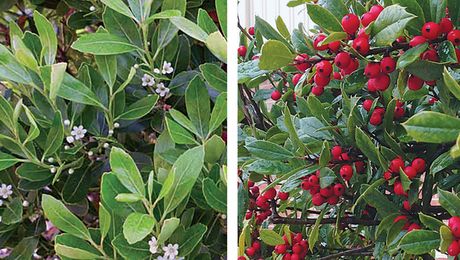For reliability and yield, you can’t beat pole beans. You’ll need some kind of support, of course, so that’s a little extra work, but the trade-off is more exposure to sunlight and ease of picking. And because they grow up rather than out, they use space efficiently.



What pole beans want
Pole beans enjoy a fairly nutritional soil (not necessarily excessively fertile) that’s situated in an area that receives full sun. I always toss compost into the area where my seeds will be planted, and after the seedlings are several inches tall I add mulch. Seeds should be watered lightly until the seedlings pop up. Once the seedlings emerge, keep the soil moist at all times.
Pole beans should be watered moderately, but once they begin to flower, kick up the watering a notch until the beans are harvested.
How to plant pole beans
Beans can be started indoors several weeks before the last frost date, but they do so well planted directly in the garden that I don’t bother starting them early. Plant your seeds about 1 inch deep (or twice as deep as they are long) once the soil reaches 60° to 70°F (the warmer the better). If you’re planting them at the base of a trellis, plant them about 3 inches apart from one another. When I’m building a teepee, I plant the seeds a couple of inches apart in a circle around the base of each pole.
Three favorite pole bean varieties



How to harvest pole beans
Bean production will be at its best if you collect your bean bounty regularly. Pole beans tend to stay tender on the vine longer than bush beans, but for the best flavor don’t push it.
Get cooking with pole beans



Fine Gardening Recommended Products

Gardener's Log Book from NYBG
Fine Gardening receives a commission for items purchased through links on this site, including Amazon Associates and other affiliate advertising programs.

The New Organic Grower, 3rd Edition: A Master's Manual of Tools and Techniques for the Home and Market Gardener, 30th Anniversary Edition
Fine Gardening receives a commission for items purchased through links on this site, including Amazon Associates and other affiliate advertising programs.

A.M. Leonard Deluxe Soil Knife & Leather Sheath Combo
Fine Gardening receives a commission for items purchased through links on this site, including Amazon Associates and other affiliate advertising programs.


















Comments
Log in or create an account to post a comment.
Sign up Log in